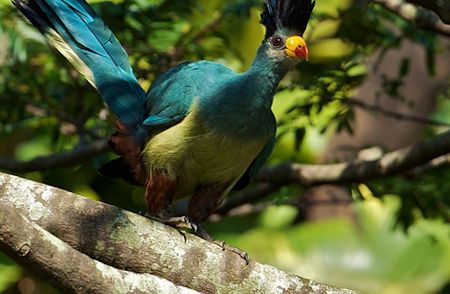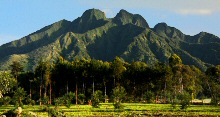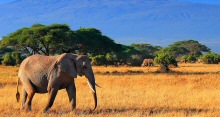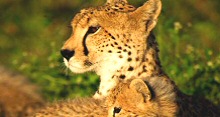 As you plan a Uganda birdwatching Safari, there are a number of factors you need to consider among which is the ease of access to that bird watching site. Preferably you should be able to easily locate the site and be well informed about the information, facilities and the services you will receive there. Fortunately Uganda has a number of sites where you can enjoy bird watching during your Safari in Uganda. Below we have briefly pointed out some of these sites and what you expect there.
As you plan a Uganda birdwatching Safari, there are a number of factors you need to consider among which is the ease of access to that bird watching site. Preferably you should be able to easily locate the site and be well informed about the information, facilities and the services you will receive there. Fortunately Uganda has a number of sites where you can enjoy bird watching during your Safari in Uganda. Below we have briefly pointed out some of these sites and what you expect there.
Entebbe Botanical Gardens
The lovely Entebbe Botanical Gardens on the northern shores of Lake Victoria, located close to the Uganda Equator were opened back in the 1898. These gardens which are on an area of 40.7 hectares annually receive an average of 1623 mm of rainfall. The gardens are comprised of various tropical plants, sub-tropical vegetation as well as plants that thrive in temperate zones, together with shrubs and other beautiful plants. During a survey conducted in 1998 it revealed that there were over 305 different plant species of which 199 were indigenous to Uganda, 110 were exotic and 122 with known medicinal significance. These Botanical gardens are much loved and annually receive over 40,000. The main gate entrance to these gardens is next to Botanical Beach Hotel. Among the commonly seen animals here are the Colobus monkeys. The gardens are a good starting site for those on a safari in Uganda. Some of the birds you will see here include: the Jackson’s Golden backed weaver, Bat Hawk (frequently seen at sunset), Palm Nut Vultures, yellow backed weaver, Black-headed weaver, African Grey Parrot and the Vieillot’s black weavers
Mabira Forest
Mabira forest is an environmentally important site within Uganda, and offers habitat to a number of plants as well as animals, over 280 bird species, over 95 different types of moths, 16 species of smaller animals among which are 312 trees plus shrub species, 16 smaller mammals and 199 species of butterflies.
The Mabira is the sole forest located in central Uganda where you can enjoy some bird watching in the forest. It is just a couple of hours drive from the capital Kampala among the bird species you will see there are: Tit Hylia, Purple headed Starling, Blue Shouldered Robinchat, Yellow whiskered Greenbul, Violet backed Starling, Grey and Yellow Longbill, Fire Crested Alethe, Leaf love, Purple Throated Cuckoo-Shrike, Toro Olive Greenbul, Black Billed Starling, Olive Green Cameroptera, Yellow Throated Tinker bird, White spotted Fluff tail, Grey throated Barbet, African Pygmy,Red headed Malimbe, Buff spotted Woodpecker, Weyn’s Weavers, Yellow mantled, Chestnut Wattle Eye, Chin spot Batis, Shining blue, Forest Robin, Jameson’s Wattle Eye, Yellow Crested Woodpecker, Blue Breasted Kingfisher, Yellow Rumped Tinker bird, Red tailed Ant Thrush, Woodland Kingfishers, Red headed Blue Bill weaver bird and the Yellow spotted Barbet
Mabamba Bay Bird Watching Site
The Mabamba Bay located in Mpigi district in central Uganda is an extensive swamp area that extends over a long narrow bay that is flanked by papyrus as you head towards Lake Victoria within Mpigi district. The vegetation that dominates this bay is Miscanthus together with Cyprus, however, there is some Nymphea caerulea plus a narrow water-channel. Some few areas are also covered by Cladium mariscus and occasionally with small ‘migrant’ papyrus islands. This IBA (Important Bird Area) is one of the finest swampy areas along Lake Victoria’s shores. Luckily this Mabamba Bay is the Uganda’s bird watching site nearest to Kampala the capital city of Uganda were you will have an opportunity to see the Shoe-bill storks frequently. It receives an average of 1300mm of rainfall and average lower temperatures of 17°C
Lutembe Bay
The Lutembe bay is a remote somewhat isolated remote site found at the mouth of the renowned Murchison Bay along Lake Victoria, between the capital Kampala and Entebbe. The shallow bay is surrounded by papyrus and it is not connected with Lake Victoria. The bay is dominated with Vossia spp, papyrus and Miscanthus vegetation. Lutembe bay extends into a Miscanthus swamp which joins the remnant forest to the north. It receives an average rainfall of 1,300m and has two rainy seasons one starting March up to May and then September to November. The average temperatures are: a minimum of 17 and a maximum of 26?C. This bay serves with great importance to the neighboring community who obtain from it water for day to day consumption, cooking, fishing, construction as well as feeding their livestock.
Not long ago Lutembe Bay was proclaimed as a Ramsar site and is home to over 100 different birds. Among the frequently sighted birds here are: include the Papyrus Gonolek, Gull billed Tern, Greater Cormorant as well as the Papyrus Yellow Warbler. During the European winter, a number of birds migrate here in thousands and among those are: the Slender billed gull, White-winged black-terns and the Grey-headed gull, to this place. This is a very beautiful place to visit.
Budongo Ecotourism Site
The Budongo ecotourism site covers an area of 793 sq km and 53% of this is a forest. The remaining 47% is grassland. This Budongo forest is regarded as a medium-altitude semi deciduous humid woodland with generally a flat landscape which makes it fairly easy to trek the chimpanzees that live in this forest. The bio-diversity of Budongo forest comprises of 24 different large mammal species, 9 species of primates, over 460 tree and shrub species, 130 moth species, 359 different birds and 289 species of butterflies.












